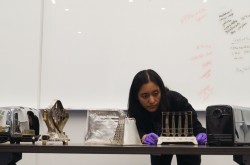Morse Music – The World’s First Electronic Wave Organ
This article was originally written and submitted as part of a Canada 150 Project, the Innovation Storybook, to crowdsource stories of Canadian innovation with partners across Canada. The content has since been migrated to Ingenium’s Channel, a digital hub featuring curated content related to science, technology and innovation.
In November 1927, Morse Robb was heralded in newspaper stories as a genius for his invention of the world’s first electronic wave organ. At the age of 24, Robb had found a way to reproduce the magnificent tones of a cathedral pipe organ in an instrument that was small enough to fit in a family home. Instead of pipes, his innovation featured 12 shafts, one for each note of the chromatic scale. Sets of “tone discs” corresponding to organ stops were mounted on each shaft. The discs rotated to produce different wave designs (varying speeds altered the pitch) translated into electric currents, processed through a vacuum tube and amplified through loudspeakers. The result was a remarkable sound, described as “ethereal” by one music critic. Robb’s electronic organ was considered far superior to anything else, including the famous American-made Hammond organ that appeared in 1934 (Robb received his patent in 1928). Robb was on the brink of partnering with Casavant Frères, a well-known organ builder in Quebec, when the Great Depression hit. Musical instruments suddenly became a luxury beyond the grasp of most people and financial backing was hard to find. Robb continued to improve on his invention and acquired more patents, but produced fewer than 20 instruments before moving on to other ventures.
















